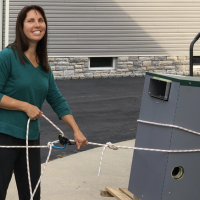Best Of
Re: Boiler
At some point, Brooklyn Union gas, was doing lots of oil to gas conversions. I think that Brooklyn Union had a contract with Burnham. Helped out Burnham on the map, because everyone trusts the big gas company. Heard through the grapevine.
Re: Oil smell after Tiger Loop installation?
just wanted to update and thank you guys. The leak was at the threaded section of the brass fitting on the left. Not the flare part. Removed it, applied some dope compatible with heating oil, and no more leak. Thanks again.
Re: Steam pressure question
They all fail fast and you don't need them except apparently for code purposes. The Right Way™ is to leave that factory one in there broken and forgotten and use your low-psi one that you added.
Re: Hub transition from CI to vitrified clay called...?
I've used oakum & hydraulic cement on Vitrified Clay joints as well. Mad Dog
Re: Hub transition from CI to vitrified clay called...?
i mean don't just go to town on it, you have to use some judgment about what you're working with. the oakum is what makes the seal, the lead is just there to hold it together.
Re: What was the best MacGuyver moment you actually saw on a job site?
Many moons ago a friend of mine's furnace stopped running in the middle of winter. Culprit was a blown transformer.
Late in the evening with everything closed. Luckily he had a pair of older desk lamps with 12V bulb and transformer in the base. Wired two of them in series for 24V, hooked it up to the furnace and fire right up. Kept it going till the replacement part arrived.
 Kaos
Kaos
Re: If you are not using AI....
I use AI all the time to give me suggestions and help me double check my numbers.
Re: 100 year old radiator??
yes, all the floors in home are cork to reduce sound. House was empty for 40 years and restored in the 90’s. Guide said majority of the floors survived.
 PC7060
PC7060
Re: 100 year old radiator??
Older than 100 years I reckon....I'm gonna say 120-125 yrs old atleast Mad Dog



